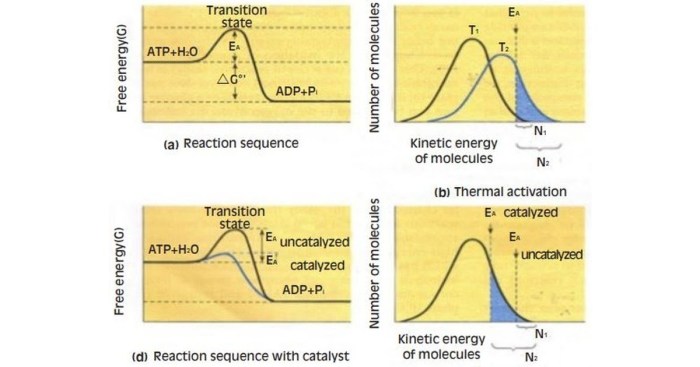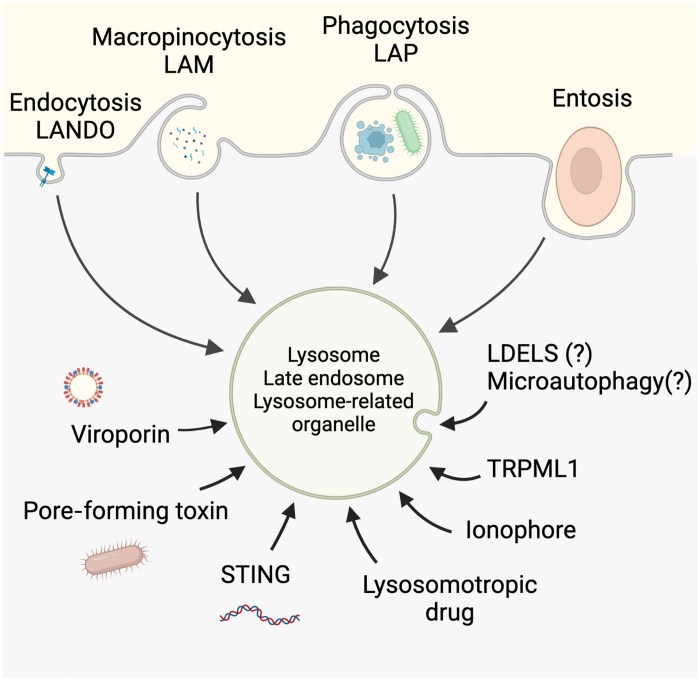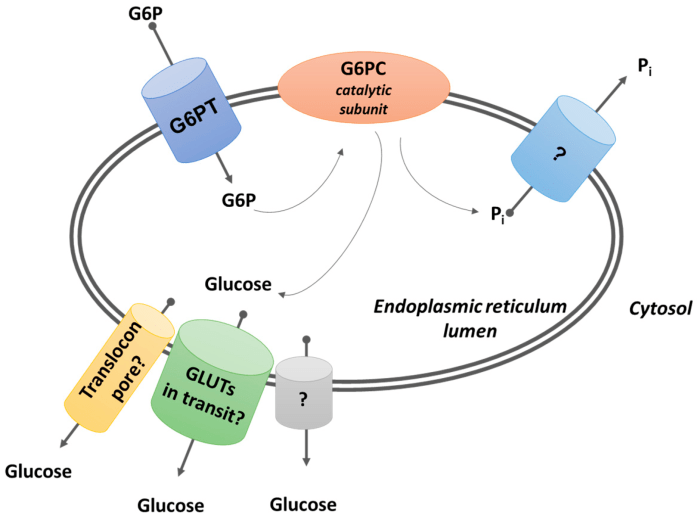Engulfment processes that require ATP play a critical role in various biological functions, including immune defense, cell homeostasis, and tissue remodeling. These processes involve the recognition and internalization of particles, such as pathogens, apoptotic cells, or debris, by specialized cells.
ATP serves as the primary energy source for these processes, driving the molecular machinery that facilitates engulfment.
ATP-dependent engulfment processes encompass a range of mechanisms, including phagocytosis, pinocytosis, and autophagy. Each process involves specific molecular components and signaling pathways that regulate the initiation, progression, and completion of engulfment.
ATP-Dependent Engulfment Processes

Engulfment is a crucial process in the immune system, whereby phagocytes engulf and destroy foreign particles, pathogens, and cellular debris. ATP-dependent engulfment processes play a significant role in this defense mechanism.
ATP, or adenosine triphosphate, is an energy currency in cells. It provides the energy required for various cellular processes, including engulfment. ATP hydrolysis, the breakdown of ATP into ADP and inorganic phosphate, releases energy that drives the engulfment process.
Types of ATP-Dependent Engulfment Processes
There are several types of ATP-dependent engulfment processes, each involving distinct mechanisms and molecular players:
- Phagocytosis:In phagocytosis, large particles, such as bacteria or dead cells, are engulfed by specialized phagocytes called macrophages and neutrophils. ATP hydrolysis powers the extension of pseudopodia, the engulfment of the particle, and the formation of a phagocytic vacuole.
- Pinocytosis:Pinocytosis is the engulfment of extracellular fluid and solutes by cells. ATP-dependent membrane ruffling and vesicle formation facilitate the internalization of fluid and solutes into the cell.
- Autophagy:Autophagy is a self-degradative process where cells engulf and recycle their own components. ATP hydrolysis drives the formation of autophagosomes, double-membrane vesicles that sequester cytoplasmic material for degradation.
These ATP-dependent engulfment processes are essential for immune defense, maintaining cellular homeostasis, and tissue repair.
Molecular Mechanisms of ATP-Dependent Engulfment

ATP-dependent engulfment processes involve intricate molecular mechanisms that facilitate the recognition, capture, and internalization of target particles. These processes rely on the coordinated action of various proteins and enzymes that harness the energy provided by ATP hydrolysis to drive the engulfment machinery.
Key Proteins Involved in ATP-Dependent Engulfment
A central role in ATP-dependent engulfment is played by a group of proteins known as the “engulfment machinery.” These proteins include:
- Receptors:Recognize and bind to specific ligands on the surface of target particles, initiating the engulfment process.
- Kinases:Phosphorylate and activate downstream components of the engulfment machinery.
- GTPases:Regulate the assembly and disassembly of the actin cytoskeleton, which provides the driving force for engulfment.
- Tethering proteins:Bridge the gap between the receptors and the actin cytoskeleton, anchoring the target particle to the cell membrane.
- Effector proteins:Promote membrane remodeling and fusion, enabling the internalization of the target particle.
Role of ATP in Engulfment Processes
ATP hydrolysis provides the energy required for various steps of the engulfment process:
- Ligand binding:Conformational changes in receptors upon ligand binding trigger ATP hydrolysis, activating the engulfment machinery.
- Actin polymerization:ATP hydrolysis fuels the polymerization of actin filaments, generating the force necessary for membrane protrusion and target particle capture.
- Membrane remodeling:ATP hydrolysis drives the fusion of the plasma membrane with internal membranes, forming the phagocytic cup and completing the engulfment process.
Regulation of ATP-Dependent Engulfment

ATP-dependent engulfment is a tightly regulated process that ensures the efficient and specific removal of apoptotic cells, pathogens, and other targets. Several factors contribute to the regulation of this process, including:
-
-*Membrane receptors
Engulfment receptors, such as integrins, scavenger receptors, and TAM receptors, recognize specific ligands on the surface of target cells. Binding of these ligands triggers the initiation of engulfment.
-*Signaling pathways
Once engulfment receptors are engaged, they activate intracellular signaling pathways that lead to the recruitment of additional engulfment machinery. These pathways involve kinases, phosphatases, and small GTPases, which control the dynamics of actin cytoskeleton remodeling and membrane extension.
-*Cytoskeletal dynamics
The actin cytoskeleton plays a crucial role in engulfment by providing the force necessary for membrane extension and phagocytic cup formation. Actin polymerization and depolymerization are tightly regulated by a variety of proteins, including Rho GTPases, WASP family proteins, and formins.
-*Membrane fusion
The final step of engulfment involves the fusion of the phagocytic cup membrane with the plasma membrane, leading to the internalization of the target cell. This process is regulated by SNARE proteins, which mediate the fusion of vesicles and membranes.
Regulation of Engulfment Initiation
The initiation of ATP-dependent engulfment is tightly controlled to prevent inappropriate engulfment of healthy cells. Several factors contribute to this regulation, including:
-
-*Surface recognition
Engulfment receptors have specific binding preferences for ligands on target cells. This selectivity ensures that only cells with the appropriate surface markers are recognized and engulfed.
-*Opsonization
Opsonins are proteins that coat target cells and enhance their recognition by engulfment receptors. Opsonization can be mediated by antibodies, complement proteins, or other molecules that bridge between the target cell and the engulfment receptor.
-*Inhibitory signals
Several inhibitory signals can prevent the initiation of engulfment. These signals can be mediated by transmembrane proteins, such as CD31, or by soluble factors, such as transforming growth factor-β (TGF-β).
Biological Significance of ATP-Dependent Engulfment: Engulfment Processes That Require Atp
ATP-dependent engulfment processes play critical roles in maintaining homeostasis and overall organismal health. These processes are essential for the removal of apoptotic cells, foreign particles, and debris, ensuring the proper functioning of tissues and organs.
Role in Immune Defense, Engulfment processes that require atp
ATP-dependent engulfment is a crucial component of the immune response. Phagocytes, such as macrophages and neutrophils, use these processes to engulf and destroy invading pathogens, such as bacteria and viruses. This engulfment initiates an immune cascade, leading to the production of inflammatory mediators and the activation of adaptive immune responses.
Maintenance of Tissue Homeostasis
ATP-dependent engulfment is essential for maintaining tissue homeostasis. In healthy tissues, apoptotic cells are continuously cleared by resident phagocytes, preventing the accumulation of cellular debris and the release of harmful molecules. This clearance process ensures the proper functioning of tissues and organs, and its disruption can lead to inflammation and tissue damage.
Regulation of Development and Tissue Remodeling
ATP-dependent engulfment also plays a role in regulating development and tissue remodeling. During embryonic development, phagocytes engulf apoptotic cells, shaping the developing tissues and organs. In adult tissues, ATP-dependent engulfment is involved in the remodeling of the extracellular matrix, contributing to tissue repair and regeneration.
Query Resolution
What is the role of ATP in engulfment processes?
ATP provides the energy required for the molecular machinery involved in engulfment, including the extension of pseudopodia, the formation of phagosomes, and the fusion of lysosomes with phagosomes.
What are the different types of ATP-dependent engulfment processes?
The main types of ATP-dependent engulfment processes are phagocytosis, pinocytosis, and autophagy. Phagocytosis is the engulfment of large particles, such as pathogens or apoptotic cells, by specialized cells called phagocytes. Pinocytosis is the engulfment of small particles or fluid by cells, and autophagy is the engulfment of cellular components for degradation and recycling.